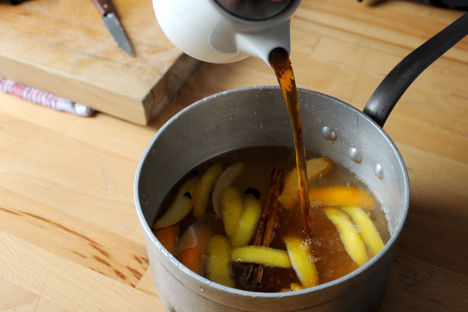
Tea – not just for drinking
Spice rubs, Earl Grey cocktails, ice creams – these days, tea is much more than a hot drink. We take a look at how chefs and bartenders are using different types of tea to enhance their food and drink.
Tea – not just for drinking
Spice rubs, Earl Grey cocktails, ice creams – these days, tea is much more than a hot drink. We take a look at how chefs and bartenders are using different types of tea to enhance their food and drink.
There are hundreds of varieties of tea in the world, from the well-known (English Breakfast, Darjeeling, Assam) to the exotic (Puerh, Oolong, Rooibos). The flavour profiles stretch right across the spectrum – especially when you include the infusions and flavoured teas available. But it’s only recently that people are starting to think of it as more than something you pour hot water over and drink, using tea to create delicious cocktails and exciting new flavour combinations in food.
The Chinese have been using tea in their cooking for centuries, burning the leaves to smoke duck and steeping boiled eggs in black tea to create a marbled effect. The Japanese use green tea to cook fish and rice in a soup called ochazuke. Even the Americans brine chicken in sweet black tea for extra flavour. In the UK we’ve used it in our baking, soaking dried fruit in tea to make traditional cakes, but that’s about it. Seeing as we’re known for our tea drinking habits, it seems a bit odd that we’ve not incorporated the leaves into our cooking – until now.
Matt Richardson, a food service coordinator for Whittard of Chelsea, has been playing around with different leaves, infusions and techniques to unlock the potential tea has as a cooking ingredient. ‘For example, the smoky flavour of Lapsang Souchong pairs perfectly with rich, fatty duck,’ he says. ‘I grind down the leaves then mix them with semolina, salt and pepper, before generously rubbing it into the scored skin of a duck breast.’
Tea also lends itself very well to sweet dishes. Tea loaf is a tried and tested favourite, and matcha – ground green tea leaves – is becoming a popular flavouring for ice cream, due to its vivid green colour and subtle floral taste. Tea-scented preserves are becoming more popular, as are fruits steeped in a tea-infused syrup; try making a sweet tea jelly and serving it either as a dessert or alongside game for something a bit different. ‘I like to use Spice Imperial tea in the mixture for banana bread – it adds flavours of zesty orange, cloves and Madagascan vanilla to the loaf,’ says Matt. ‘Chinese Milk Oolong also pairs perfectly with the buttery consistency of shortbread. Replace a little butter with 20ml of double strength steeped Milk Oolong; it will add caramel notes to the biscuit.’
Tea total
It’s not just food that can benefit from tea. Mixologists are starting to make use of the subtle, complex flavours found in some leaf varieties and combining them with alcohol to make some interesting (and very popular) drinks. Sometimes they’ll infuse bottles of spirit with leaves, or use tea brewed in cold water as the base for other ingredients. Try using a cold cup of green tea as the base for a mojito, or infuse white tea in gin before topping it up with tonic. Matt suggests steeping two teaspoons of Elderflower Earl Grey tea in 20ml of hot water before combining with lemon juice, sugar and gin and shaking over ice. Top it up with soda water and a slice of lemon for a refreshing and unique take on a Tom Collins.
There are plenty of recipes already available for cooking with tea; get started with Paul A Young’s tea bread or Nathan Outlaw’s Earl Grey ice cream. Tong Chee Hwee uses jasmine tea to smoke pork ribs, while Graham Campbell utilises the smoky flavour of Lapsang Souchong to hot-smoke salmon. But it’s easy to experiment at home – just replace the water in your favourite recipes with cooled brewed tea. It’s time to stop thinking of tea in terms of hot drinks; using it in the same way you would a spice unlocks its full potential.


